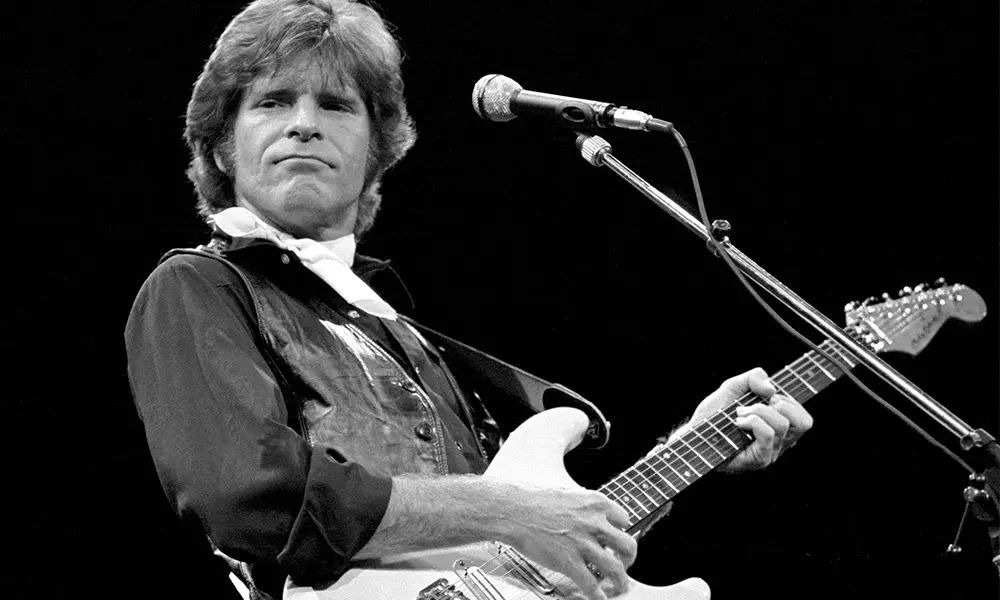On This Day in 1969: Creedence Clearwater Revival’s Green River Made Rock History
On this day in 1969, one of the most enduring anthems of American rock music was released: “Green River” by Creedence Clearwater Revival (CCR). The track would become a signature song for the band, forever associated with the swamp-rock sound that cemented their place in music history. Though it peaked at number two on the Billboard Hot 100, kept from the top spot by the bubblegum novelty hit “Sugar, Sugar” by The Archies, “Green River” has long outlasted its chart rival, echoing through decades of classic rock radio, soundtracks, and live performances.
A Childhood Memory Turned Timeless Anthem
Unlike many rock songs of its era, “Green River” didn’t emerge from psychedelic trips, political manifestos, or countercultural experimentation. Instead, it was inspired by something far more personal and nostalgic: John Fogerty’s childhood vacations.
Fogerty often spoke about a favorite getaway from his youth, a place where he could escape the growing pressures of city life and immerse himself in the simplicity of nature. The imagery in the lyrics—“If you get lost, come on home to Green River”—reflected not just a physical location, but an emotional sanctuary.
The song painted vivid pictures of rural life: barefoot walks along riverbanks, bullfrogs croaking at night, and rope swings dangling from tree branches. To listeners, it was both a travelogue and a time capsule, conjuring a vision of America that felt real, earthy, and profoundly human.

The Sound of Swamp Rock
Musically, “Green River” was a distillation of the swamp-rock style that CCR perfected. Despite hailing from the San Francisco Bay Area, the band sounded as though they had been born and raised on the muddy banks of the Mississippi River.
The song opens with one of Fogerty’s most recognizable riffs—gritty, blues-drenched, and instantly magnetic. His raw, urgent vocals brought a sense of lived experience, even though the imagery came from childhood memory. Supported by the tight rhythm section of Doug Clifford (drums) and Stu Cook (bass), with brother Tom Fogerty on rhythm guitar, the track clocked in at just over two minutes of pure, unfiltered rock.
“Green River” didn’t rely on studio gimmicks or sprawling solos. Its power came from its precision, its economy, and its authenticity. It was rock stripped down to its essence.

Chart Success—and an Unlikely Rival
When “Green River” hit the charts in August 1969, it quickly rose to No. 2 on the Billboard Hot 100. Many expected it to claim the top position. But history had other plans.
The number one spot at the time belonged to “Sugar, Sugar” by The Archies, a fictional cartoon band created for a Saturday morning TV show. With its bubblegum pop sound and catchy chorus, “Sugar, Sugar” became the year’s top-selling single.
For CCR, the irony was hard to ignore. Here was a band that embodied the grit and soul of American roots music, kept from the top by a manufactured group that didn’t even exist in real life. Yet, while “Sugar, Sugar” has remained a nostalgic curiosity, “Green River” has endured as one of the defining tracks of its era.
Part of a Legendary Album
“Green River” was not just a single—it was also the title track of CCR’s third studio album, released in August 1969. The Green River album solidified the band’s reputation as one of the most consistent hitmakers of the late 1960s.
Alongside the title track, the album featured other enduring songs like “Bad Moon Rising” and “Lodi.” The record became a massive success, reaching No. 1 on the Billboard 200, and further establishing CCR as one of the most influential bands of the decade.
A Defining Moment in CCR’s Career
The release of “Green River” came at a crucial moment for Creedence Clearwater Revival. By 1969, they were already on a hot streak, with hits like “Proud Mary” and “Born on the Bayou.” But “Green River” proved they weren’t just a one-hit wonder or a lucky accident. They had tapped into something uniquely American—music that spoke to both city dwellers longing for the countryside and rural listeners who recognized their own lives in the lyrics.
The year 1969 also saw CCR perform at Woodstock, further cementing their reputation as a live powerhouse. Though their set was famously left out of the Woodstock film for decades, those who attended remembered Fogerty’s raspy voice cutting through the night, a reminder that CCR’s music was built for both intimate listening and roaring crowds.
Legacy and Influence
More than five decades later, “Green River” still holds its place as one of the greatest songs in classic rock. It has been covered by countless artists, featured in films and TV shows, and remains a staple of Fogerty’s live performances to this day.
Critics often point to “Green River” as one of the purest examples of John Fogerty’s songwriting genius. It showed how personal memory could be transformed into universal art, resonating with listeners far removed from the specific riverbank that inspired him.
Conclusion: Beyond the Charts
While it never reached number one, “Green River” didn’t need to. Its cultural impact has far outshone many songs that topped the charts that year. For fans, it is more than a hit single—it is a reminder of summers past, of youthful innocence, of a time when music captured not just the sound of a moment but the feeling of a lifetime.
On this day in 1969, “Green River” flowed into the world. And more than half a century later, it still flows—through car radios, concert halls, and the hearts of those who find themselves longing for the simplicity of a childhood summer by the water.